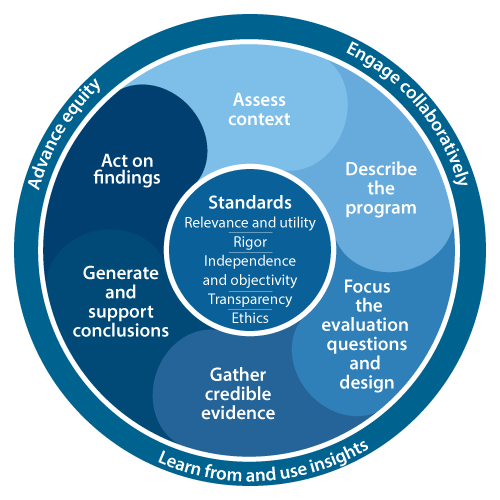At a glance
CDC's Program Evaluation Framework guides public health professionals in conducting program evaluation. It is a practical, nonprescriptive tool, designed to summarize and organize essential elements of program evaluation.
About CDC's Program Evaluation Framework
CDC's Program Evaluation Framework provides a guide for designing and conducting evaluation across many programs and settings within and outside public health. It can be used to build evidence, understand programs, and improve evidence-based decision making. The framework consists of:
- Three Cross-Cutting Actions
- Five Evaluation Standards
- Six Evaluation Steps

Cross-Cutting Actions
The three Cross-Cutting Actions are the foundational principles of the evaluation framework, and should be woven into each step of an evaluation:
- Engage collaboratively
- Advance equity
- Learn from and use insights
Evaluation Standards
High quality evaluation should consider these five Evaluation Standards:
- Relevance and utility
- Rigor
- Independence and objectivity
- Transparency
- Ethics
Evaluation Steps
Each evaluation should follow these steps:
- Assess the context
- Describe the program
- Focus the evaluation question and design
- Gather credible evidence
- Generate and support conclusions
- Act on findings
